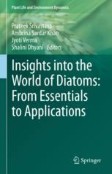Search
Search Results
-
Carbon and nitrogen isotopes of lizardfish provide insight into regional patterns of ocean biogeochemistry across the eastern continental United States
Map** spatial variation in stable isotope values (isoscapes) of primary producers and consumers can provide insight into regional patterns of...

-
Biogeochemistry
Nutrition, growth, respiration, and death of organisms are gigantic transfers of matter and energy when aggregated at the level of ecosystems, ocean...
-
Otolith biogeochemistry reveals possible impacts of extreme climate events on population connectivity of a highly migratory fish, Japanese Spanish mackerel Scomberomorus niphonius
Climate change, particularly extreme climate events, is likely to alter the population connectivity in diverse taxa. While the population...

-
Marine Biogeochemical Cycles
Microorganisms catalyze elemental cycling in the ocean and regulate geochemical processes that are crucial for the maintenance of planetary...
-
Freshwater and Marine Ecology
Freshwater and Marine Ecologyis an introduction to the field of aquatic ecology, integrating the conceptually and methodologically widely...

-
The marine nitrogen cycle: new developments and global change
The ocean is home to a diverse and metabolically versatile microbial community that performs the complex biochemical transformations that drive the...

-
Marine Viruses: Agents of Chaos, Promoters of Order
Marine viruses are considered the most enigmatic form of life in the oceans. They are, simultaneously, agents of chaos and promoters of order....
-
Isotopic Tracers of the Marine Nitrogen Cycle: Present and Past
The oceanic nitrogen cycle consists of a web of microbially mediated transformations driven in part by the large range in possible nitrogen...
-
Microbial metabolites in the marine carbon cycle
One-quarter of photosynthesis-derived carbon on Earth rapidly cycles through a set of short-lived seawater metabolites that are generated from the...

-
Life and death in the soil microbiome: how ecological processes influence biogeochemistry
Soil microorganisms shape global element cycles in life and death. Living soil microorganisms are a major engine of terrestrial biogeochemistry,...

-
Spatial disparity of fishing activities overlap** the abrupt shifts for marine net primary production
Marine net primary productivity (NPP) plays an important role in regulating marine ecosystem processes, determining marine carbon sinks and...

-
Molecular hydrogen in seawater supports growth of diverse marine bacteria
Molecular hydrogen (H 2 ) is an abundant and readily accessible energy source in marine systems, but it remains unknown whether marine microbial...

-
Sources and Cycling of Organic Matter in the Marine Water Column
The organic carbon cycle operates on multiple time scales with a only small fraction of the global reservoir actively exchanged. For the marine...
-
Ocean Acidification Conditions and Marine Diatoms
Ocean acidification doesn’t just erode calcium carbonate shells. It can also slow the rate of diatoms to build their beautiful, intricate silica cell...
-
Microbes as marine habitat formers and ecosystem engineers
Despite their small individual size, marine prokaryotic and eukaryotic microbes can form large 3D structures and complex habitats. These habitats...

-
Chemotaxis may assist marine heterotrophic bacterial diazotrophs to find microzones suitable for N2 fixation in the pelagic ocean
Heterotrophic bacterial diazotrophs (HBDs) are ubiquitous in the pelagic ocean, where they have been predicted to carry out the anaerobic process of...

-
Controls on the Carbon Isotopic Compositions of Lipids in Marine Environments
Organic carbon isotopes have long been used to study modern and ancient biogeochemical processes. Controls on the isotopic composition of organic...
-
Chemotaxis increases metabolic exchanges between marine picophytoplankton and heterotrophic bacteria
Behaviours such as chemotaxis can facilitate metabolic exchanges between phytoplankton and heterotrophic bacteria, which ultimately regulate oceanic...

-
Silicon Biogeochemistry in Terrestrial Ecosystems
Silicon (Si) cycling, its speciation, and availability in soils is crucial to terrestrial ecosystem functioning and services, especially in...
-
Diverse marine benthic communities and reduced anthropogenic contaminants near Scott Base (Hut Point Peninsula, Ross Island, Antarctica)
Antarctic marine ecosystems are largely thought to be among the planet’s least impacted, yet habitats adjacent to research stations can be heavily...

